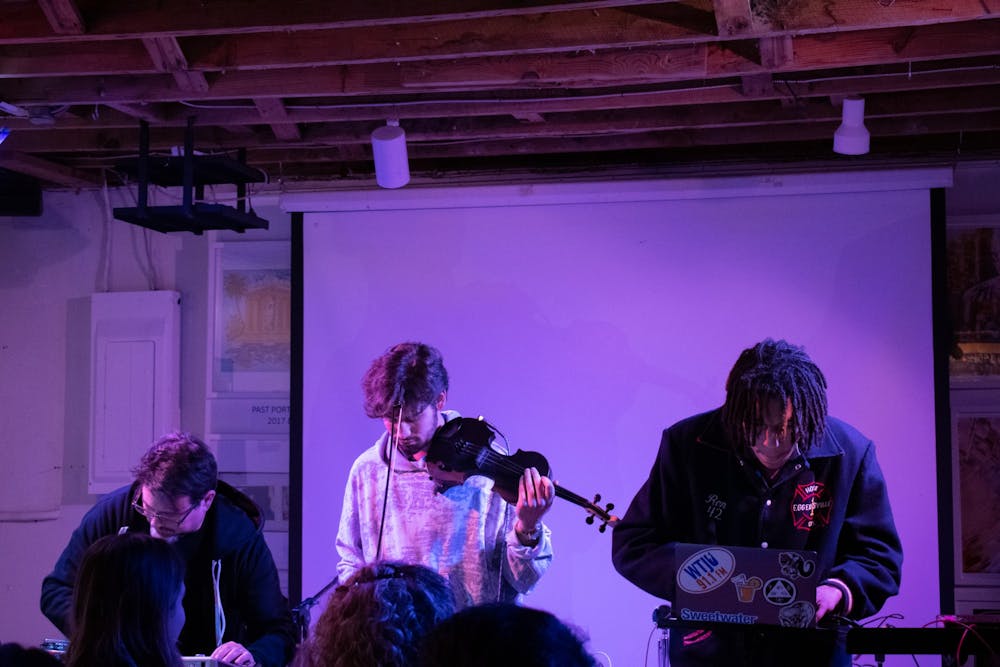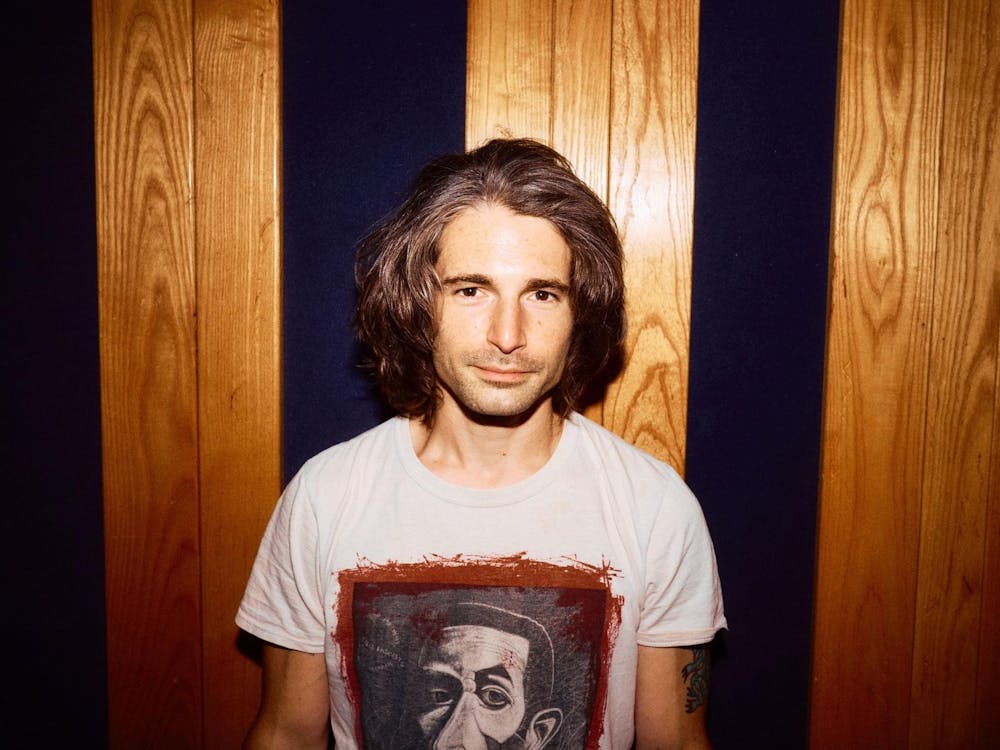The Bridge Progressive Arts Initiative’s one-room gallery — nestled behind the Belmont Bridge — was packed with students and Charlottesville community members Feb. 21 for the Telemetry: TechnoSonics XX show. Every month, The Bridge hosts Telemetry — a music program that occurs with the support of the McIntire music department and U.Va. Arts. This weekend marked a special installment — one which combined the work of Telemetry artists and the TechnoSonics XX show.
Dreamy rain and thunder audio titled “Rainforest IV” — created by students of Sound of Art in Practice — drowned out the chatter. The space was dimly lit by soft orange and violet lights and adorned with a clutter of objects — glass bottles, cans, wires and audio equipment were strewn across two tables, while an orange cone hung from the ceiling. What seemed like just an array of mundane, every-day objects was actually a mix of unlikely instruments used by the artists to create innovative sounds that heightened the duality of sound and silence.
The evening was marked by a variety of dynamic acts. A hush spread over the crowd as Three Blind Mice opened the show with “Violinguistics” — an electro-acoustic musical composition that melded together smooth and somber violin music with tense, warped voice recordings. Also, Becky Brown showcased her piece “Dark Parts” — which embodied the essence of a liminal space. The piece consisted of a video in which the viewer seemed to stumble through an empty house to the sound of a static voice repeating “inside.”
University faculty Ted Coffey and Heather Frasch took the stage with “Remembering with Objects.” The delicate text score was created with slow, meticulous movements. While Coffey shook a ceramic container with metal rings near a microphone, Frasch moved between creating sounds with a pine cone and tapping two cups together. The music “maps personal connections among memory, places, and self.”
In the next piece — “Deep Map #1” — Michele Zaccagnini immersed the audience in an aural and visual experience which he named “deep mapping.” Deep mapping is “an approach that allows the composer to store and render musical data into visuals by ‘catching’ the data at its source, at a compositional stage.” The piece consisted of a video of streams of colored light hitting a bubble, synchronized with trippy and jumbled beats.
Later in the night, Max Tffirn hovered over drone synths, guitar pedals and sequencers, twisting the knobs of his audio equipment, creating “Interruptions in an Endless Expanse.” The piece incorporates a plethora of echoing and pulsating sounds “that slowly morph into one another.”
Guest artist Ryoko Akama ended the show with the sixth of her solo performance series, “shimatsu.” Although Akama has been doing these kinds of performances for over a decade, this was her first time performing in Charlottesville. In her performances, she attempts to make “aural perceptions.”
“Sometimes it doesn't work, sometimes it does, it's fine, it is a matter of process,” Akama said. The composition began with the sound of a bouncing ping-pong ball. A rotating wire created a spark as it struck against a can — brightening the room for a second with a flash of orange light. As Akama began picking up glass bottles that emitted a piercing sound, the orange light was quickly replaced by the green glow of a single lightbulb. The sounds created by these objects were periodically halted, magnifying the silence in the space. Akama’s innovative performances start with finding the right objects.
“I collect objects all the time,” Akama said, “It is a level of embarrassment but if you walk around with me around the town I am always looking around at everything that is rusting, old or metallic.”
While her work is thought out and carefully executed from beginning to end, there is an air of fluidity in her performance due to the unpredictability of the art form.
“I try to think that there are no mistakes in my work or performance. I am following my instincts,” Akama said. “Every performance within the tour I use the same objects, but at the same time every performance will be quite different.”
Just as the show linked together objects and sound, the Bridge Progressive Arts initiative makes it its mission to foster a link between the University with the rest of the Charlottesville community.
“We are always trying to not only bridge those sorts of communities but also get different mediums to sort of collide too,” said Alan Goffinski, executive director of The Bridge.
Goffinski lauds the relationship between the University and Charlottesville, deeming them two entities that coexist harmoniously.
“The Charlottesville community has a lot to offer the students at U.Va., and we believe the U.Va. students have a lot to offer Charlottesville,” Goffinski said. “We like to be an organization that is a conduit for that exchange.”







